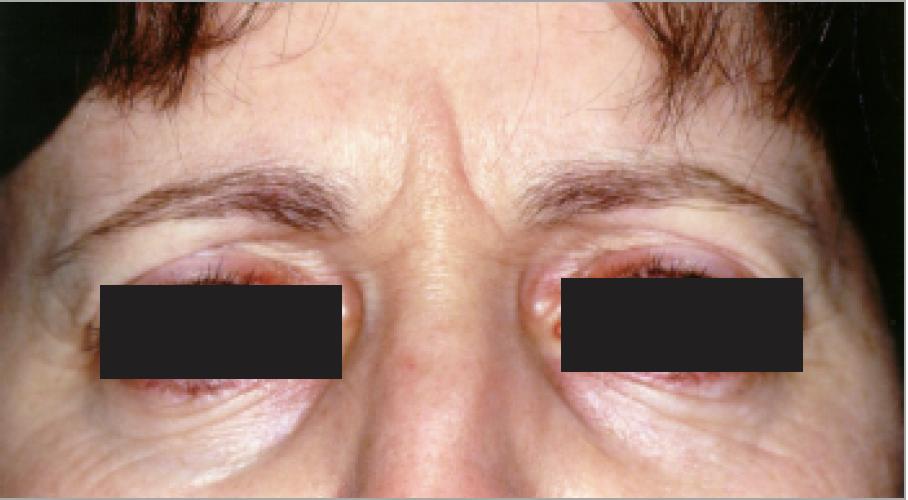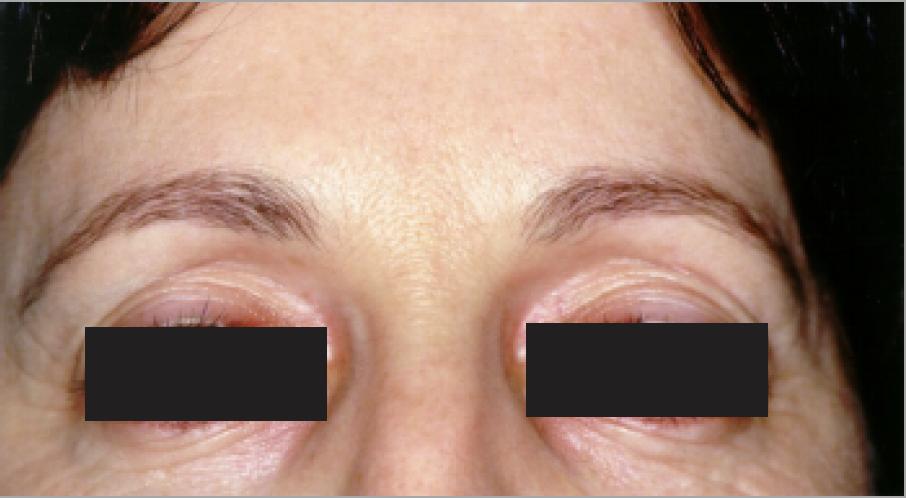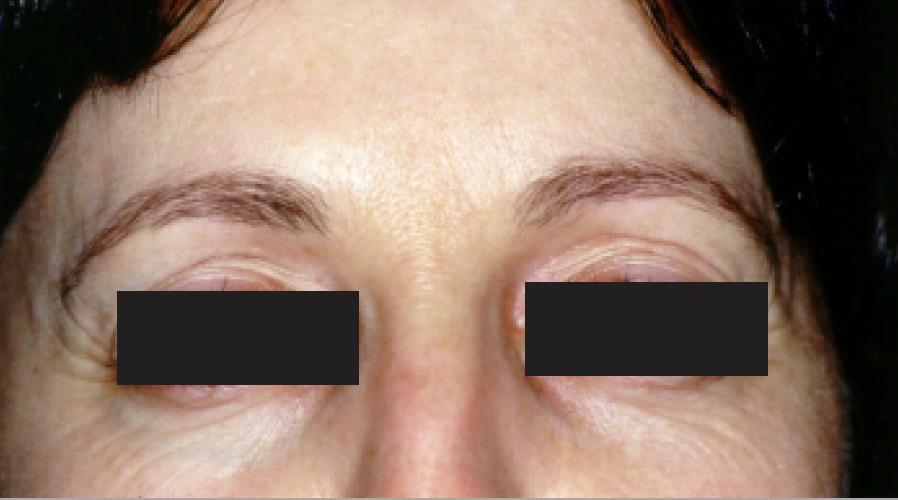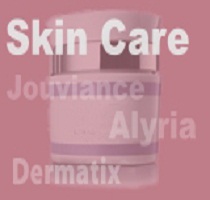Volume 9 • Issue 2
The Botox™ Craze
Commonly Asked Questions

by David R. Jordan
M.D., F.A.C.S., F.R.C.S.(C)
INTRODUCTION
Despite recent marketing hype, Botox™ (Botulinum Toxin A) is neither new, nor a cure all. Botox™ was developed more than 20 years ago by an eye doctor to treat crossed eyes and muscle spasms around the eye. Although in my practice I have used Botox™ since 1985 for eyelid spasms (Blepharospasm, Hemifacial spasm), wrinkles and frown lines, many physicians have just recently “discovered” it’s many benefits. The list of conditions it has been found to benefit seems to be growing almost on a monthly basis.
Botox™ has become one of the most popular methods for treating frown lines and laugh lines in the eyebrow, forehead and eyelid area. The quick, painless treatment has no down time for healing, and produces marked improvement in wrinkles caused by dynamic contraction of facial muscles.
Exactly What is Botox™?
Botox™ is the trade name for a neuro-toxin produced by a bacteria known as Clostridium. This bacteria is found worldwide in earth and water. Under certain low oxygen conditions, it activates and produces a protein called “botulinum toxin”. Such is the case when vegetable or meat products are contaminated by the bacteria and stored in an airtight container. If this contaminated food is ingested along with enough botulinum toxin, paralysis of various muscles throughout the body develops. This type of food poisoning is referred to as “botulism”. A purified version of the toxin in minute quantities (up to 500 times less than what would be needed to cause systemic symptoms) can weaken muscles when injected selectively into certain parts of the face.
How Does It Work?
When used in very small doses, Botox™ works by paralyzing the muscles that create frown lines, crow’s feet, and horizontal forehead wrinkles. Botox™ protein acts by preventing the release of a neurotransmitter (acetylcholine) at the nerve-muscle junction. Without acetylcholine the nerve cannot stimulate muscle contraction, and the overlying skin will therefore not wrinkle or fold. The result: smoothing of the overlying skin that lasts three to six months.
What Are The Side Effects?
It is very important to place the right amount of Botox™ in the right place. The side effects of Botox™ therapy are mild and self-limited and are more related to technique than toxicity. Occasionally a person may have some mild bruising or temporary swelling at the injection site. In less than 3% of patients, the upper eyelid may droop slightly, but this resolves as the drug is absorbed over the next few weeks. If a droopy eyelid does occur, an eye drop (Iopidine) is available to raise it. Having injected over 10,000 patients in the last 17 years, I am amazed at the low incidence of side effects with this product.
How Is The Treatment Performed?
Botox™ is administered through a small acupuncture-sized needle at those sites requiring wrinkle reduction. The crows feet usually require 3 to 6 injection sites per side while the forehead may require 9-12 injections (depending upon the number of lines) and the wrink les between the eyebrows 6-7 injections. Although discomfort is minimal, topical anesthetic cream can be applied prior to the injection for those patients desiring it.
How Long Does Botox™ Last?
Within 3 to 5 days of injection, the Botox™ has taken effect to weaken the muscles. The human body slowly breaks down the botulinum protein until it is inactive and normal muscle function returns. Facial lines stay smooth for 3 to 6 months before another round of injections is needed.
Does Botox™ Work In Everybody?
Almost everybody. On very rare occasions someone will have little or no response to the treatment. The lack of response is more likely due to in-adequate amounts of Botox™ given, or Botox™ administered in the wrong place due to lack of experience with the product. As a result the patient is unhappy and thinks the Botox™ did not work. It is very important to place the right amount of Botox™ in the right place. Following the first injection of Botox™ the patient should be seen in follow-up about 2 weeks later to be sure the dose given was the right amount for that particular patient. Some patients do require more than others. The Botox injection (dose and injection sites) should be customized for each patient.
What If I Want To Keep Some Facial Expressions?
Too much Botox™ will give the person a mask-like face. It is important to individualize Botox™ treatments and find out exactly what each individual would like. This can easily be done. Having some facial expression is important, as it is essential for communication. When properly injected, Botox™ will smooth frown lines, crows feet, furrowed brows and lines brought on by years of repetitive facial expressions.
Once I Start, Am I Committed To Using It?
No. You can try it, if you like it, have another when it wears off. If you want to wait for whatever reason, it’s okay to wait. Have another when you are ready.
What Are The Common Facial Areas That Can Be Treated With Botox™?
- Vertical frown lines between the eyebrows
- Horizontal forehead lines
- Crows feet
- Unequal brow height
- Upper lip wrinkling
- Down turning of the mouth
- Bunny lines along the side of the nose
- Horizontal neck lines
- Vertical bands in the neck
- VerticalOther: excess underarm sweating, hand or foot sweating
Does Botox™ In One Area Cause Wrinkling In Adjacent Areas?
Generally not. When one area (ex. furrows between the brows) is treated, this area flattens out and becomes wrinkle free. Some patients will notice wrinkles in adjacent areas only because the area treated is so smooth. Thus, the wrinkles in other areas were actually there all along, it’s just that the patient is noticing them. Very occasionally, when a patient is trying to recreate a certain facial expression in an area with Botox™ on board, the adjacent areas may seem to fold more, in an attempt to make the lost expression. This situation could potentially cause more noticeable wrinkling in adjacent areas. This can easily be treated by slightly broadening the area of Botox™ injection so these adjacent muscles are also included in the Botox™ treatment as well.
What About Botox™ Parties?
Botox™ parties are frowned upon by most physicians.
Botox™ treatment should be customized to each patient’s desire and pattern of facial expression. The areas of injection should be discussed in a professional manner in an office setting with no outside influences acting. This is difficult to do in a social gathering where friends may be pressuring one another. Alcohol and Botox™ do not mix. Alcohol is a vasodilator. Injecting Botox™ into a patient with alcohol on board is potentially dangerous. With dilated vessels in the area of injection there is a greater risk for systemic absorption as well as an injection directly into the dilated vessels. Obtaining informed consent when the patient has alcohol on board invalidates the consent.
Botox™ is a powerful drug that should be administered with care and with the appropriate Doctor-patient relationship respected. A party atmosphere with socialization of the Doctor and patient violates the ethical responsibility of the physician.

Figure 1
Pre Botox injection – lots of vertical frown lines.

Figure 2
1 week post Botox injection – in the relaxed position → there are no vertical frown lines.

Figure 3
1 week post Botox injection – Patient is trying to frown but cannot. There are no vertical lines.
If you have any questions regarding the topics of this newsletter, or requests for future topics of InSight, please contact Dr. David R. Jordan office by telephone at (613) 563-3800.







